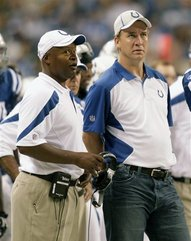NFL CBA Series: Dead Money and Acceleration
In order to speak on acceleration, I believe it necessary to first explain “dead money.” It is essentially cap space that a team has already been dedicated to a player (through bonus or guarantees).
Since all salary a player receives must eventually count against the cap, any salary a team has paid (or later fully guaranteed money) that has yet to count against the salary cap is dead money. It’s the League’s way of ensuring a team allocates the money it has spent to the cap. Otherwise, how would it truly be a hard-cap league?
If one is familiar with business terms, dead money is simply a sunk cost—money that has been spent in the past that cannot be recovered.
If someone asked me to put it into the simplest terms, the salary cap is kind of like a team’s credit card. They can purchase the player’s services now and only pay the prorated portion, but the team is obligated to reimburse cap for the rest of that purchase. If the team no longer likes their purchase, they can’t simply cut their losses. The team still owes the salary cap the rest of its money.
In an ideal world, a team would love to avoid any dead money on their roster, but they would then not be able to take advantage of proration, which would limit the amount of quality players a team can add to its roster in a given season.
For players, having dead money on the books can provide a type of job-security. Dead money, when it is there, always comes into play when a team considers letting a player go, whether through release or trade. It bought wide receiver Roy Williams a few years in Dallas, after Cowboys owner Jerry Jones ponied up the paper and draft
choices to get the former top-ten pick.
In order to find the amount of dead money on a team’s roster, one merely need figure out the amount of money a team has already guaranteed its players and subtract the amount of that money that has actually been charged to the salary cap. The difference will be the amount of dead money on a team’s roster. The same equation would be utilized to find a player’s individual dead money.
Now to acceleration. All prorated signing bonuses or other amounts treated as signing bonuses are subject to acceleration. When a player is released from the team, his remaining prorated cap figures accelerate into the team’s cap for the League Year of his release.
The rules for such acceleration differ depending on when the player is taken off of the roster, but for our purposes, we will assume a pre-June-1 release or trade. If interested in releases after June 1, go to In2The League’s section on June 1 Release and Designation.
If a team releases the player, they are relieved of any remaining P5 salaries the player has in his contract, but the signing bonus accelerates.
In 2011, Peyton Manning signed a 5-year, $90 million contract, $20 million of which was paid as a signing bonus. In 2012, with Stanford quarterback Andrew Luck entering the draft and the Colts wielding the first-overall selection, the team chose to release Manning. Since the $20 million bonus was prorated over five years, only $4 million (the 2011 proration) had been charged to the cap since the deal had been signed. When the team released him in 2012, the remaining four years of the signing bonus proration ($16 million) accelerated and was owed to the salary cap immediately.
For the Colts, Manning was the heaviest of cap hits for a team that found itself stuck in accelerated dead money.
Late last season, National Football Post pointed out a few teams playing with huge chunks of their salary cap frozen. In 2006, Manning played alongside Joseph Addai, Dallas Clark, and Gary Brackett, each of whom were key contributors the team’s Super Bowl Championship. In 2012, these four players accounted for $27,426,668 of the team’s $128,807,705 of salary cap space and were not even on the roster. These players brought home the hardware for Indianapolis in 2006, but they also handicapped the Colts cap-wise in 2012.
When the Cowboys gave up 1st, 3rd, and 6th-round selections in 2009 for Detroit Lions wideout and Texas native Williams, they also signed him to a huge 5-year, $45 million deal. The trade ended up being the worst in franchise history. Williams, who hasn’t played for the team since 2010, still occupied $8.75 million in the team’s cap space in 2012.
For one last hypothetical example, Tony Romo will do fine. Some Cowboys fans (albeit those who would rather see a 2-14 team than watch Tony Romo take another snap—they must not remember Quincy Carter, Drew Henson or Chad Hutchinson) have and will continually call for his release. So, let’s hypothetically give them their wish. Jerry Jones listens to the fans and releases Tony Romo May 31st.
|
Year |
Base |
Signing Bonus |
Other Bonuses |
Cap Hit |
Dead Money |
|
2013 |
$1,500,000 |
$5,000,000 |
$5,318,833 |
$11,818,833 |
$53,499,833 |
|
2014 |
$13,500,000 |
$5,000,000 |
$3,273,000 |
$21,773,000 |
$41,681,000 |
|
2015 |
$17,000,000 |
$5,000,000 |
$3,273,000 |
$25,273,000 |
$19,908,000 |
|
2016 |
$8,500,000 |
$5,000,000 |
$1,635,000 |
$15,135,000 |
$11,635,000 |
|
2017 |
$14,000,000 |
$5,000,000 |
N/A |
$19,000,000 |
$5,000,000 |
|
2018 |
$19,500,000 |
N/A |
N/A |
$19,500,000 |
N/A |
|
2019 |
$20,500,000 |
N/A |
N/A |
$20,500,000 |
N/A |
As shown, with the new deal Romo signed, if he were to be released right now, they would take an accelerated cap hit in the neighborhood of $50 million.
If a player retires, their remaining signing bonus money still counts and accelerates. The Baltimore Ravens know this too well. After winning a Super Bowl Championship in February, the team’s cap has taken on accelerated bonuses due to the retirements of Ray Lewis ($2.95 million) and Matt Birk ($1.4 million).
If a team renegotiates a Player Contract and reduces the years, the signing bonus proration for the reduced years accelerates into the cap, evenly, over the new contract years.
Also, a team can prorate over a year that a player can terminate by reaching certain performance incentives. However, if the player reaches the incentive and voids the years, the prorated amount for that year accelerates as well. If this puts a team over the cap, the difference is charged to the next season.
For example, Dallas cornerback Brandon Carr signed a five-year, $50-million contract with a $10-million signing bonus. $2 million is charged against the salary cap each year of his contract. If he, hypothetically, had a clause that allowed him to void the last year of his contract for reaching two Pro Bowls and he accomplished that, Dallas would be charged $4 million in the fourth (and now final) year of his deal.
Outside of voidable years, for any acceleration that puts a team over the cap, the team will be given seven days to get back underneath it. During this time, the team can sign no players to their roster.
Proration is a great tool, but acceleration can have a crippling effect on a team’s talent base.



Reblogged this on abroan.